To help individuals enrich their tech-savvy journey, the EdgeCast series includes videos that share invaluable insights, tips, and tricks to navigating through an ever-evolving world of technology. A recent addition to this series was Leveraging AI for Universal Design for Learning (UDL) in Higher Education hosted by Josh Gaul, Associate Vice President & Chief Digital Learning Officer, Edge. He was joined by Dr. Laura Romeo, Director of Learning Innovation, Development, and Scholarship, Edge, and Jaimie Dubuque, former Teaching and Learning Technologist, Rider University.
Diving into higher education last November, Jaimie Dubuque joined Rider University after ten years as a classroom teacher and inclusive education facilitator in southern New Jersey. In this position, her primary responsibility was supporting school districts and including students with disabilities in the general education classroom. “My master’s degree is in curriculum and instruction, and I have experience as an English teacher,” shares Dubuque. “I’m also a parent of a child with ADHD, so I have a personal investment in topics like Universal Design for Learning (UDL) and the potential that AI has to unlock many barriers that exist for kids like my son.”
Like Dubuque, Dr. Romeo’s career path began in the classroom. After being an elementary teacher for seven years, she returned to school to get her master’s in instructional design and technology. “I became a curriculum specialist and started to see some discrepancies in the classroom with curriculum and how things are designed for student learning needs,” explains Romeo. “For that purpose, I wanted to do more research and dig into how we can overcome this one-size-fits-all learning approach by making UDL more mainstream.”
Putting UDL into Practice
Universal Design for Learning is an educational framework that aims to create flexible learning environments and instructional methods to accommodate diverse learners. By using these guidelines, institutions can provide multiple means of representation, action, expression, and engagement. “Putting the UDL framework into practice allows you to use a variety of media formats like video, images, and audio, provide alternatives to visual information through captions and descriptive audio, and incorporate tools like text to speech, speak to text, and digital note taking,” says Gaul. “Designing flexible, customizable learning environments that can be adopted and adapted to individual preferences and abilities helps organizations emphasize relevant, meaningful and authentic learning experiences that foster motivation and engagement.”
In partnership with Seton Hall University, Edge hosted the inaugural AI Teaching & Learning Symposium in June of 2024 to explore the impact of AI on teaching, learning and the student experience. Dubuque was a presenter at this event and led a discussion on how AI can be leveraged in teaching and learning to enhance accessibility, as well as the practical strategies for implementing AI in planning. “No matter if you work at the front office of an elementary school or in the upper echelon of administration, one of the most common things you hear teachers say is, I don’t have time,” says Dubuque. “Tools like ChatGPT are going to be essential for maximizing our time and resource investments within schools without spending additional money.
“AI tools like ChatGPT can quickly turn teachers’ ideas and inspiration into customized, relevant content for their classrooms,” continues Dubuque. “A lesson plan that still has a one-size-fits-some approach can be transformed to incorporate elements of UDL principles. The request could be general, or an instructor could be more specific and ask for guided notes outline for students to use during their discussion. All of this can happen without spending additional resources.”
“AI tools can help generate multiple formats that cater to different learning styles, but not everyone is aware of their availability and capabilities. Getting the word out and sharing real-life examples and model demonstrations will be essential to expanding its reach into more educators’ classrooms and helping teachers know how to use these tools more effectively.”
— Laura Romeo, Ph.D.
Director of Learning Innovation, Development, and Scholarship, Edge

As someone who also recognizes the benefits of using AI platforms like ChatGPT, Romeo says this tool can streamline content creation and refine content to ensure it aligns with UDL strategies and the needs of specific students. “AI tools can help generate multiple formats that cater to different learning styles, but not everyone is aware of their availability and capabilities. Getting the word out and sharing real-life examples and model demonstrations will be essential to expanding its reach into more educators’ classrooms and helping teachers know how to use these tools more effectively.”
Generating Educational Resources
In addition to writing a quick lesson plan, AI can be used to generate different educational resources. “ChatGPT can be used to create a variety of models to supplement a subject or lesson plan,” explains Dubuque. “For example, an instructor could use the platform to generate a PowerPoint presentation or slide that students can interact with on their own. Being able to control your own learning by dictating when a slide is moved and not moved is empowering for students, no matter their age or ability level. A teacher can also generate multiple worksheets that hit on those same UDL standards.”
“Another piece of this puzzle is students graduating from college and becoming first-year teachers,” continues Dubuque. “In some cases, it’s the wild west and they’re entering school districts that do not necessarily have a set curriculum. Or on the other hand, students are being handed a scripted curriculum that they’re expected to follow to a tee. Both of these scenarios are dangerous for education, and we must find the sweet spot where instructors can generate content that still aligns with the curriculum but can be customized for different learning styles. For example, an English teacher could use ChatGPT to generate response questions that students will answer in a small group. They can think how they want to generate conversation questions and create different levels of questions that provide more scaffolding for students to either elevate the level of the work they’re already doing or help them reach their grade level expectations. Most importantly, we’re able to create a shared experience in our classroom communities and help students at different levels and abilities to succeed.”
Conversing with AI
When using AI tools like ChatGPT, the goal is to provide specific prompts that will generate the most relevant and useful responses to the user. However, without practice, knowing how to effectively engage with ChatGPT can be challenging. “To get the most out of this tool, I’ve found asking open-ended questions followed by more tailored follow-up questions based on the solutions is a good approach,” says Romeo. “I also look back at my learning outcomes that I’m trying to align a lesson or content with and see if they match. Having authentic conversations with this AI component helps improve my productivity and allows me to personalize learning in new and creative ways.”
Dubuque agrees that open-ended questions are useful and says she approaches ChatGPT as a coach-athlete relationship, where the AI platform is functioning as the coach. “At the end of the day, you’re the athlete with the ball in your hands and you have to make the game time decision of what you’re going to do. Open-ended questions can provide ideas for particular scenarios or how you can ensure you’re meeting the needs of students who struggle with time management. From there, you can give it the parameters of your class. So, while I might be more generic in my questions around how I can incorporate UDL elements of action and expression in a particular lesson plan, I can then be more specific about how to do that in a 45-minute timeframe.”

“Many schools are concerned about students using AI inappropriately, but instead of focusing on how students can use this tool to cheat, we should look at how we can adapt assessments to reduce the need for plagiarizing,” continues Dubuque. “How do we put up guardrails without the need to police AI usage? The best way to prevent cheating is to keep the human element in instruction and talk to students along the way. Whether you teach a fully online class where you’re communicating over a learning management system (LMS) or on Zoom talking directly to a student, or in a classroom and seeing students in person, there are checkpoints in your instruction that can help keep students on track and accountable for their work.”
Institutions who are working to remove barriers to learning can make assessments more accessible and offer different formats, including oral, written, or visual options to demonstrate student understanding. “The key is for institutions to incorporate AI tools into their practice and show students how to use these productive knowledge constructs properly and in a way that will benefit them,” says Romeo. “Students can use AI to refine their ideas and enhance a portfolio of work that has videos, creative writing, and data analysis.”
Establishing Policies and Procedures
As stated in Rider University’s code of academic integrity, learning, teaching, and scholarship cannot be conducted in an atmosphere of dishonesty. To help establish policies and procedures, review allegations of academic misconduct, and promote academic ethics, the University has formed an Academic Integrity Committee. “Our academic integrity task force is currently looking at AI and how these tools and technology fit into our current codes of conduct and within different areas of study,” shares Dubuque. “The misuse of AI we’re seeing still falls under our current policies around cheating and plagiarism. In addition, our Teaching and Learning Center offers several workshops that explore AI, including a session that looks at the ways artificial intelligence can be used to embed the UDL framework into instruction.”
In working with Edge member institutions, Romeo says many organizations have clear guidelines set around their AI usage and these standards are outlined in course syllabi. “Taking this approach encourages transparency and ethical use of AI because you’re creating an open channel of communication between the instructor and the student. Students understand what resources they can use and how to use them. We’re also seeing many departments with specific instructors who not only regulate the use of AI, but are also trying to educate themselves and their faculty and students on how to use these tools responsibly.”
“From an instructional design perspective, there are bigger conversations starting about what resources are out there, how they’re being used, and how AI can be utilized ethically and effectively,” continues Romeo. “Many institutions are exploring whether to standardize AI usage across the entire organization or across individual departments. The AI-powered teaching assistant, Khanmigo, for example, can offer guidance to students to help them learn different subjects and can assist teachers in lesson planning. Tools like this are not moving the goalpost, they’re leveling the playing field for students. Since we’re at the starting point of understanding AI in education, the line is going to move and blur as we continue to have conversations about this topic and determine the best path forward.”
“Keeping student data private and secure is of the utmost importance, so any information put into an AI platform must be kept generic. As educators, designers, and instructors, we need to think about when using AI is appropriate and when it is not and look at this technology with a critical eye. AI can be very helpful when drafting course materials or to help spark creative ideas, but the final review of the content should always be completed by the educator to ensure integrity. We also must consider where the content goes once it is entered into an AI platform. For students that utilize it as a tool, can they close the computer and have an extensive conversation about the material? If not, they do not have ownership or accountability, and they need to go back and review the information. I anticipate that this is going to be an interesting conversation between unions, administrators, and school boards and thinking about what it means to use AI as an instructor and when it’s considered appropriate and when it’s not.”
— Jaime Dubuque
Former Teaching and Learning Technologist, Rider University

Protecting Privacy and Intellectual Property
When using AI, educators will need to be mindful of the data that these tools collect and how that information is used. “Keeping student data private and secure is of the utmost importance, so any information put into an AI platform must be kept generic,” says Dubuque. “As educators, designers, and instructors, we need to think about when using AI is appropriate and when it is not and look at this technology with a critical eye. AI can be very helpful when drafting course materials or to help spark creative ideas, but the final review of the content should always be completed by the educator to ensure integrity. We also must consider where the content goes once it is entered into an AI platform. For students that utilize it as a tool, can they close the computer and have an extensive conversation about the material? If not, they do not have ownership or accountability, and they need to go back and review the information. I anticipate that this is going to be an interesting conversation between unions, administrators, and school boards and thinking about what it means to use AI as an instructor and when it’s considered appropriate and when it’s not.”
Part of Dubuque’s primary role is offering Canvas support and helping faculty members use the LMS to deliver dynamic learning experiences. “Teachers are looking for ways to use Canvas to create modules or add a rubric to an assignment. I’ll often offer helpful tips for using ChatGPT to create a course outline or course objectives based on their syllabus and show them the possibilities of AI tools. We’re able to start removing the stigma that AI is going to replace instructors, but rather can free up time so they can do other things that will enhance their classes and support their students. They’re able to be more thoughtful about their assessments, spend time giving authentic feedback, and align their instruction with UDL principles.”
“Artificial intelligence is not going to replace our human creativity or judgment, it is a tool that can enhance the teaching and learning experience when used properly and ethically. I’ve tried to remain curious about AI and continue to experiment with it, while keeping students’ needs and best learning principles in mind. Ultimately, it is our responsibility as educators to wield this tool thoughtfully, ensuring it enriches rather than diminishes the educational journey.”
— Laura Romeo, Ph.D.
View From The Edge
“If used thoughtfully, AI tools can help students organize their thinking and provide additional clarification on certain topics and content-specific vocabulary,” continues Dubuque. “It’s important to acknowledge that students with learning disabilities will still have those support needs when heading to college and AI tools like ChatGPT may start appearing as accommodations in students’ Individualized Education Programs (IEPs) and 504 plans. AI can provide the ability to break down some large-scale assignments into more manageable tasks and help students be more successful in their classes.”
Romeo adds, “Artificial intelligence is not going to replace our human creativity or judgment, it is a tool that can enhance the teaching and learning experience when used properly and ethically. I’ve tried to remain curious about AI and continue to experiment with it, while keeping students’ needs and best learning principles in mind. Ultimately, it is our responsibility as educators to wield this tool thoughtfully, ensuring it enriches rather than diminishes the educational journey.”
To hear more of this conversation and other thought-provoking discussions about the evolving world of technology, visit njedge.net/edgecast.


